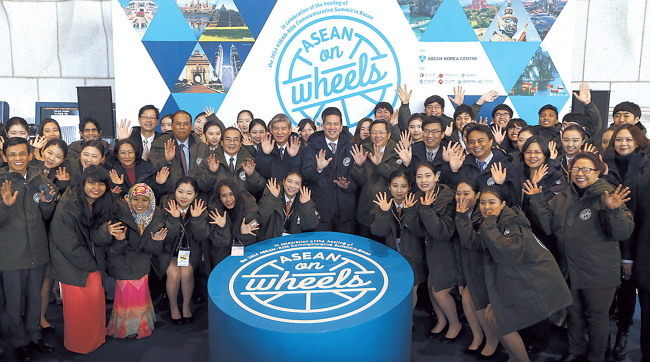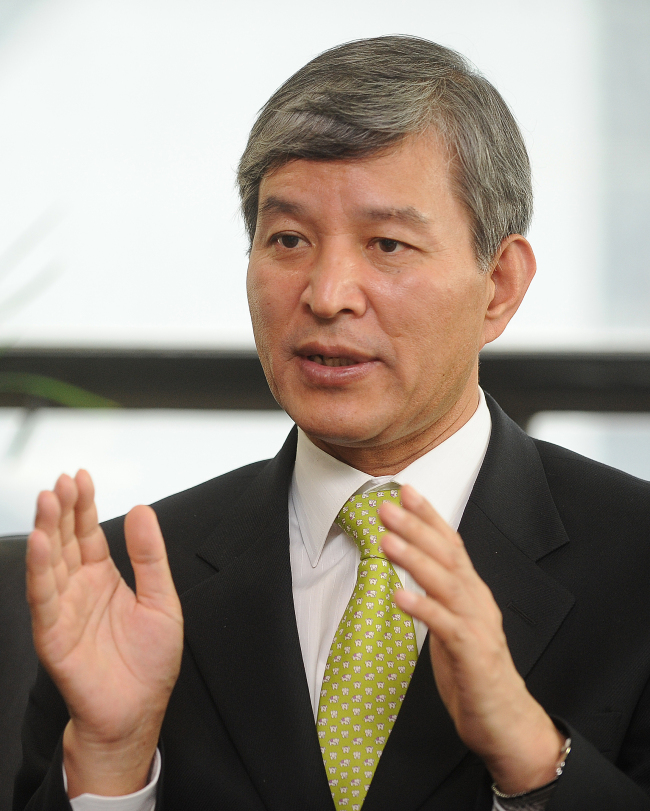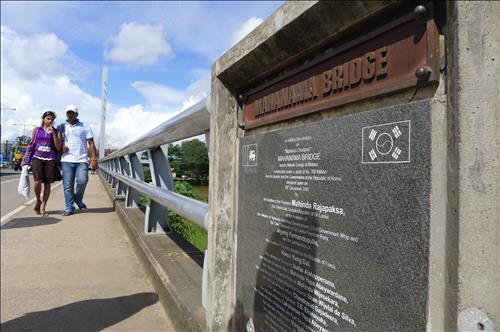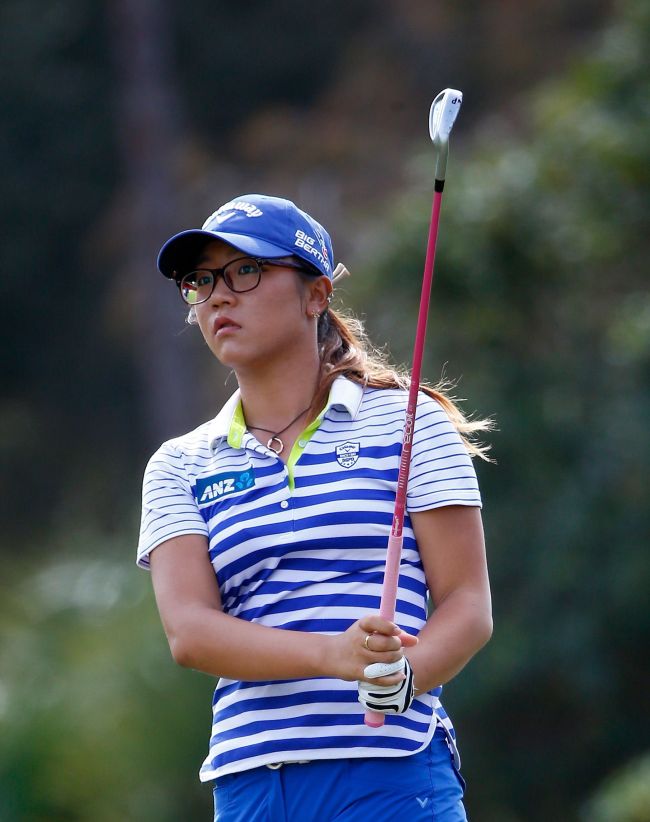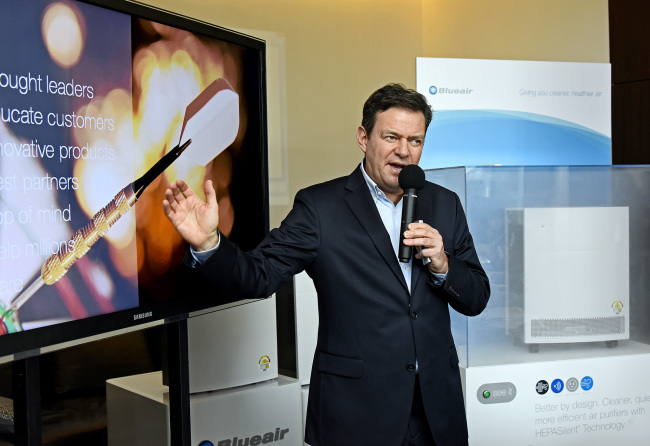A student-run online media outlet criticized the finance minister in a handwritten poster on Wednesday, satirizing recent government initiatives aimed at raising the national birthrate and creating a more flexible labor market.
The Misfits group put up posters around Seoul entitled “A threatening-letter to Mr. Choi,” in reference to Finance Minister Choi Kyung-hwan. The group, which describes itself as an alternative journalism outlet, is managed by nine students at Yonsei University and Korea University.
The letter criticized government efforts to raise the birthrate, which stands at 1.19 per woman according to Statistics Korea, a government institute. It also ridiculed remarks last week by Choi, who suggested that current regulations “over-protected” permanent workers, disadvantaging firms.
The letter follows the unofficial Korean college tradition of posting “daejabo” on campus to raise awareness about social ills. Antigovernment student protesters in the 1970s and the 1980s often used similar posters to criticize the military governments that ruled the country then.
“Mr. Choi, let’s sit down for a drink and have a chat,” the letter read. “You know what, let’s even forget that you’re the finance minister and that I’m just another college kid, and have a real, honest, person-to-person chat.
“The average college grad finishes school with a 13 million won ($11,660) debt.
“If we can’t repay our school loans, they become our parents’ debt. Our family’s debt,” the letter continued.
“And you expect us to find ways to have kids?” the letter continued, in apparent reference to rising national private debt levels that some sociologists say have played a role in stagnating the birthrate.
“The employment market isn’t helping,” the letter added.
“It’s not that there seems to be a lack of jobs. Why not let (the unemployed youth) do the work allotted to those permanent workers who are often forced to work past 6 p.m.?” the letter said.
The reference appears to show contempt for corporations who chose to overwork existing employees without pay, instead of hiring new workers to do the extra work.
“And we never asked you to fire permanent workers. We asked you to ensure that nonpermanent workers get the same benefits permanent workers receive at the workplace,” the letter added, in reference to Choi’s remarks on Nov. 25.
College students who saw the letter had mixed reactions.
“I can relate to much of the content of the letter,” Cho Seong-min, an economics major at Yonsei University in Seoul, said. “It’s not that permanent workers are over-protected. I think it’s more about nonpermanent workers receiving inadequate pay and such,” he said.
Yoon Ha-youn, a recent college grad working at Yonsei University agreed, but said the issues were too old.
“Many of us have been talking about the huge problems that a low birthrate can engender and the issues involving ill-treatment of contract workers,” she said. “I think that’s maybe why not too many people seem interested in the poster by the Misfits.”
By Jeong Hunny (hj257@heraldcorp.com)
The Misfits group put up posters around Seoul entitled “A threatening-letter to Mr. Choi,” in reference to Finance Minister Choi Kyung-hwan. The group, which describes itself as an alternative journalism outlet, is managed by nine students at Yonsei University and Korea University.
The letter criticized government efforts to raise the birthrate, which stands at 1.19 per woman according to Statistics Korea, a government institute. It also ridiculed remarks last week by Choi, who suggested that current regulations “over-protected” permanent workers, disadvantaging firms.
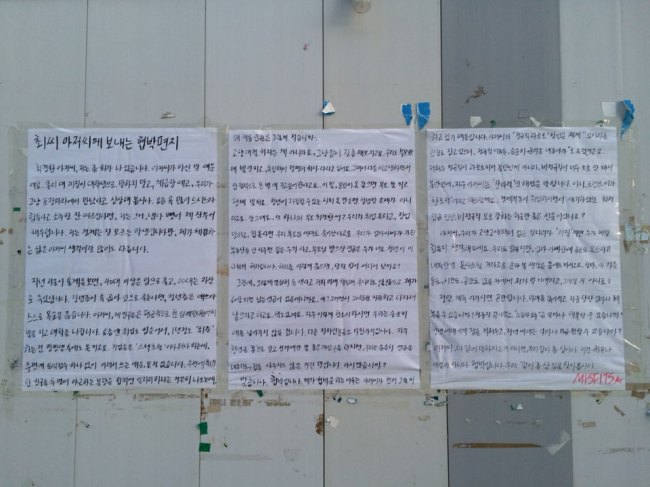 |
| Posters put up by the Misfits group at Yonsei University, Seoul. Copies of the letter were put up at Korea University’s campus in Seoul, and along streets near Gangnam Subway Station. (Choi Yoon-bae/Yonsei University) |
The letter follows the unofficial Korean college tradition of posting “daejabo” on campus to raise awareness about social ills. Antigovernment student protesters in the 1970s and the 1980s often used similar posters to criticize the military governments that ruled the country then.
“Mr. Choi, let’s sit down for a drink and have a chat,” the letter read. “You know what, let’s even forget that you’re the finance minister and that I’m just another college kid, and have a real, honest, person-to-person chat.
“The average college grad finishes school with a 13 million won ($11,660) debt.
“If we can’t repay our school loans, they become our parents’ debt. Our family’s debt,” the letter continued.
“And you expect us to find ways to have kids?” the letter continued, in apparent reference to rising national private debt levels that some sociologists say have played a role in stagnating the birthrate.
“The employment market isn’t helping,” the letter added.
“It’s not that there seems to be a lack of jobs. Why not let (the unemployed youth) do the work allotted to those permanent workers who are often forced to work past 6 p.m.?” the letter said.
The reference appears to show contempt for corporations who chose to overwork existing employees without pay, instead of hiring new workers to do the extra work.
“And we never asked you to fire permanent workers. We asked you to ensure that nonpermanent workers get the same benefits permanent workers receive at the workplace,” the letter added, in reference to Choi’s remarks on Nov. 25.
College students who saw the letter had mixed reactions.
“I can relate to much of the content of the letter,” Cho Seong-min, an economics major at Yonsei University in Seoul, said. “It’s not that permanent workers are over-protected. I think it’s more about nonpermanent workers receiving inadequate pay and such,” he said.
Yoon Ha-youn, a recent college grad working at Yonsei University agreed, but said the issues were too old.
“Many of us have been talking about the huge problems that a low birthrate can engender and the issues involving ill-treatment of contract workers,” she said. “I think that’s maybe why not too many people seem interested in the poster by the Misfits.”
By Jeong Hunny (hj257@heraldcorp.com)






